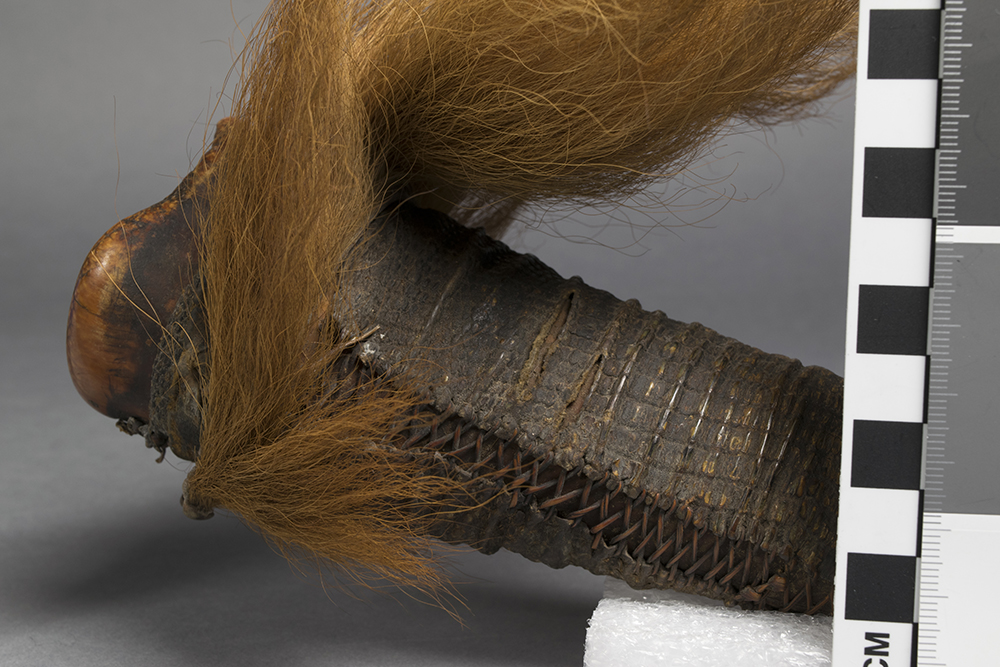by Teresa Jimenez-Millas
During the past month I have had the great opportunity of working on a parchment treatment under the supervision of Sarah Reidell, the Margy E. Meyerson Head of Conservation, Tessa Gadomski, Conservation Librarian, and the rest of the fantastic team in the Steven Miller Conservation Lab at the Penn Libraries’ Kislak Center for Special Collections, Rare Books and Manuscripts.

The parchment is an Ethiopian prayer scroll (29-94-123) in our Museum’s collection that we are treating for the opening of the Africa Galleries this November 2019.
In The Walters Art Museum online catalogue, there are similar scrolls to this one. The Walters describes them as, “Ethiopian prayer scrolls were made to be the length of the person who commissioned them, thereby protecting the owner from head to toe.”
This scroll is made of three sections of parchment sewn together using parchment strips/thongs (0.5 cm) from the same kind of animal. Parchment is a sheet material that is made from the skin of domesticated animals such as calves, sheep, and goats, cleaned of their hair and flesh and then dried under tension on a frame. It is a mechanical process and the skin is not chemically tanned. Further analytical methods such as scanning electron microscopy (SEM) or Peptide Mass Fingerprinting (PMF) would give us more information as to the kind of protein and other features that would help us to identify the type of skin.
The first step on this new and exciting project was a close examination of the object under a stereo binocular microscopic (Leica IC80HD). In my examinations, I noticed some interesting features that I would not have been able to understand without Sarah’s expertise, and I’d like to share some of these cool details here.
At first glance, the third section of the scroll has a 9 cm stitched repair that one might think was made after the parchment was manufactured. But as I learned, the process of manufacturing parchment involves drying the material under tension, which leads to marked changes in fiber orientation, and inevitably involves some degree of breakage of certain fibers in the dermal network.

Observation under magnification with Microscope LEICA IC80D we can see that the sewing holes are very round but are not punched. The holes appear to have been pierced when the skin was wet, and the parchment dried around the stitching creating ridged folds that are now keeping the split closed.


The thread is still present in about 25% of the repair. The edges of the thread are not cut but are frayed. At some areas we can still see some remains of black ink that also indicate that the scribe probably wrote over the repair. All these observations indicate that this repair was made during the manufacturing process of the parchment, while still wet.


I will write more about the treatment of this object in a future post!








